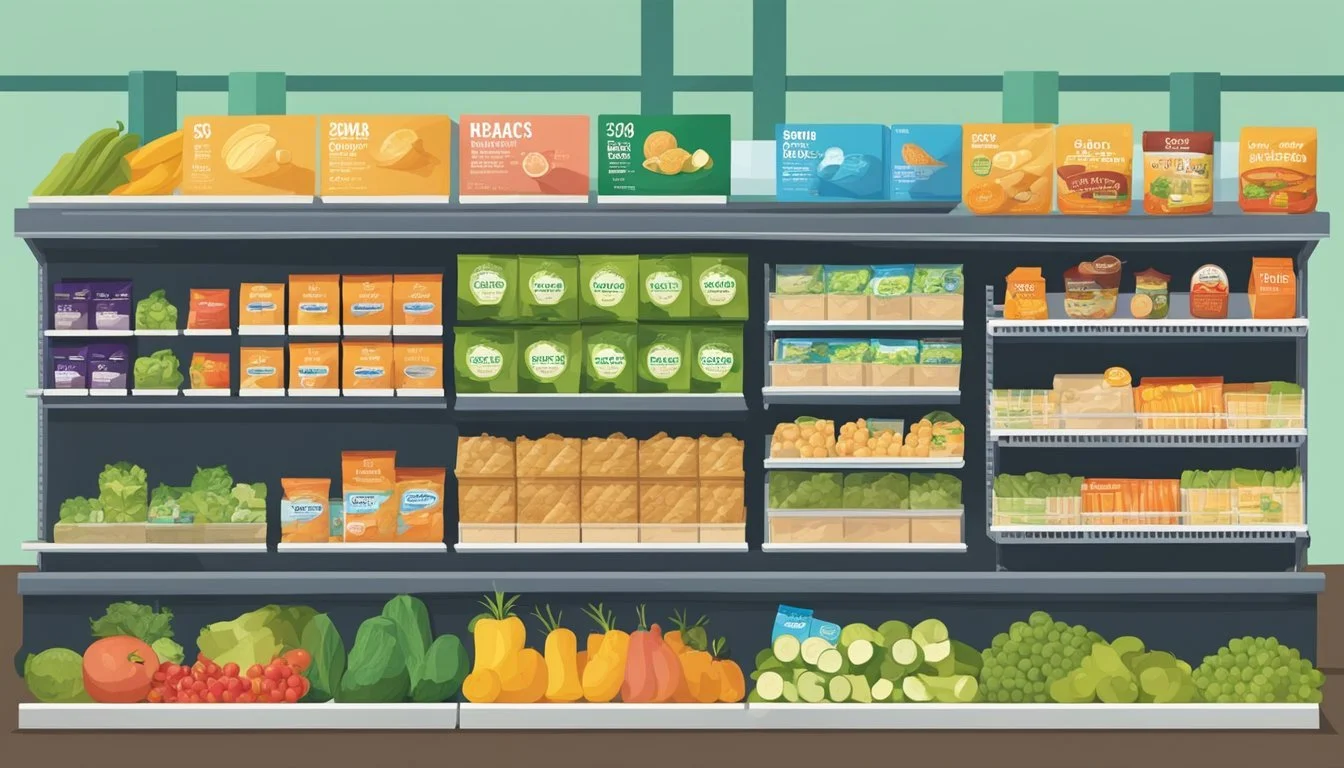Is Whole Foods Cheaper Than Sam's Club?
Comparing Grocery Prices and Value
Part of Our Grocery Store Guide with Details on Whole Foods Market Prices and Sam's Club Prices
When comparing grocery prices and shopping experiences, many consumers look toward Whole Foods Market and Sam's Club as two major contenders on opposite ends of the spectrum. Whole Foods Market, renowned for its selection of organic and natural foods, tends to attract those looking for specialized products and higher-end grocery items. On the other hand, Sam's Club, a division of Walmart, appeals to shoppers interested in bulk purchases and savings through a membership model.
Price comparisons between the two retailers have shown that Sam's Club generally offers lower costs for similar goods, primarily because of its bulk-selling approach and membership fee structure. For instance, Sam's Club may sell organic apples at a lower price per pound than Whole Foods Market. This essentially reflects the core business model of Sam's Club, which is to sell larger quantities at lower margins, passed as savings to its members.
While Whole Foods Market's pricing might be higher, it is important to recognize that the store emphasizes quality, sustainably sourced products and caters to a niche market. Shoppers making decisions based on specific dietary needs or preferences may find that the price difference is justified by the unique offerings and product standards upheld by Whole Foods Market. Thus, choosing one over the other is often a matter of personal shopping priorities, whether they be cost, product selection, or dietary considerations.
Overview of Whole Foods and Sam's Club
Whole Foods Market and Sam's Club are prominent retailers in the U.S. with distinct business approaches. Whole Foods focuses on natural and organic products, while Sam's Club leverages bulk selling and membership exclusivity for discounted prices.
History and Business Models
Whole Foods Market began in 1980 with the ambition to provide natural and organic foods to a growing consumer base interested in healthier living. Its stores offer a variety of products including fresh produce, meat and poultry, bakery items, and other grocery essentials, with an emphasis on quality and sustainability. Whole Foods operates on a supermarket model, but with a focus on organic and premium products.
On the other hand, Sam's Club, which opened its first location in 1983, is a membership-based warehouse club, a subsidiary of Walmart Inc. It operates by selling products in bulk, which typically allows for lower prices due to the economies of scale. Sam's Club members pay an annual fee in exchange for access to discounted merchandise, ranging from groceries to electronics and more.
Market Position and Branding
Whole Foods Market has established itself as a leader in the organic and natural foods sector and is often associated with a higher-end shopping experience. The brand emphasizes quality and environmental stewardship, catering to a demographic willing to invest in premium prices for perceived health and quality benefits.
Sam's Club, with its warehouse club model, is positioned as a cost-saving retail option for consumers and businesses alike. It leverages its association with Walmart to offer competitive pricing. Its brand is synonymous with value, savings, and bulk purchasing, appealing to price-conscious consumers and small business owners throughout its nearly 600 locations across the U.S. and Puerto Rico.
Membership Comparison
When comparing the membership options of Whole Foods and Sam's Club, it is important to consider the types of memberships available, the associated fees, and the benefits and perks that each retailer offers.
Membership Types
Whole Foods does not operate on a membership basis, so there's no direct comparison to Sam's Club's membership structure. In contrast, Sam's Club offers two main types of memberships: the Club level and the Plus level. These memberships cater to a range of customer needs, with the Plus tier offering additional benefits over the standard Club tier.
Membership Fees
At Sam's Club, there are two distinct membership fees corresponding to the levels of membership:
Club: Around $45 per year
Plus: Approximately $100 per year
Whole Foods, being a regular retailer, does not charge any membership fees. Shoppers can visit and make purchases without an upfront membership cost.
Membership Benefits and Perks
Sam's Club members at the Club level receive basic access to the warehouse, instant savings on select items, and fuel savings. Plus members enjoy all the Club-level perks in addition to cash rewards, free shipping on most items, earlier shopping hours, and more. Whole Foods offers the Amazon Prime Rewards Visa Card, which provides cashback benefits to shoppers, but this is associated with Amazon Prime membership and not specific to Whole Foods alone.
Whole Foods customers also benefit from discounts and deals if they are Amazon Prime members. Meanwhile, Sam's Club provides its members with savings on bulk purchases, a benefit Whole Foods does not directly offer.
Price Analysis
In assessing the affordability of Whole Foods compared to Sam's Club, one must examine their pricing strategies and direct price comparisons of certain grocery items.
Overall Pricing Strategies
Whole Foods is often perceived to carry higher price tags for its products, and this is generally true when compared to warehouse retailers like Sam's Club. Whole Foods focuses on delivering organic and natural products, which typically command a premium price. Sam's Club, leveraging Walmart's extensive buying power, offers lower prices by capitalizing on bulk purchasing and supplying items in larger quantities, often to the benefit of price-conscious consumers.
Specific Product Price Comparisons
Bread: At Whole Foods, consumers pay more for organic and artisan bread options. In contrast, Sam's Club provides a wider variety of bread in bulk at a lower unit price.
Rice: Sam's Club offers larger amounts of rice at prices that are more economical than smaller, organic packages available at Whole Foods.
Toilet Paper: The per-roll cost of toilet paper is usually less expensive at Sam's Club, due to the bulk-sale format.
Meat Department: Sam's Club tends to have the cheapest price for meat, especially when bought in larger quantities, while Whole Foods is known for its quality but at a higher cost per pound.
Grocery Item Whole Foods Price Sam's Club Price Bread Higher Lower Rice Higher Lower Toilet Paper Higher Lower Meat Higher Lower
Given these specific price comparisons, one can infer that on everyday prices for common grocery items, Sam's Club generally offers the lowest price advantage to its customers.
Product Assortment
When comparing Whole Foods Market to Sam's Club, shoppers will find distinct differences in the product assortment at each retailer, particularly in terms of quality, breadth of product range, and organic offerings.
Quality and Product Range
Whole Foods Market prioritizes a high-quality selection, with an emphasis on freshness and sourcing. Customers frequenting Whole Foods can expect a diverse array of fruits, vegetables, meats, and pantry staples that adhere to strict quality standards. Whole Foods' meat department is known for its organic and free-range options, catering to consumers who are selective about the ethical sourcing and quality of their meat.
On the other hand, Sam's Club, as a warehouse club, typically provides a broader range of products in bulk quantities. This includes a wide variety of snacks, office supplies, electronics, and household goods in addition to food items. While Sam's Club does carry fresh fruits and vegetables as well as a selection of meats, the focus is more on providing value and convenience rather than on the premium or specialty items.
Organic and Specialty Item Availability
Whole Foods Market has carved a niche for itself in the organic foods market. Customers can find a vast selection of certified organic products, including organic fruits, vegetables, and packaged snacks. The store's commitment to organic options extends to most of its product lines, making it a go-to destination for shoppers concerned with organic credentials.
Sam's Club, while having a limited assortment of organic products, has been expanding its selection in response to consumer demand. Although not as extensive as Whole Foods, the availability of organic options at Sam's Club offers a budget-friendly alternative to the typically higher-priced items found at specialty markets. The club's inventory of specialty items is growing, but Whole Foods remains the leader in this category for consumers who prioritize a wide range of organic and specialty food items.
Private Labels and Exclusive Brands
Private label products offer consumers an alternative to national brands, often at a lower price. They are exclusively available at the retailers which market them.
Store Brands Versus National Brands
Retailers such as Whole Foods Market and Sam's Club have developed their own private labels to compete with national brands. Whole Foods carries its 365 Everyday Value brand, highlighting organic and environmentally-friendly products. Sam's Club, owned by Walmart, offers Member's Mark, a brand known for its value and quality since its inception in 1998.
Kirkland Signature is the private label brand for Costco, another wholesale competitor, and is often cited as a benchmark of quality and value in the wholesale industry. Similarly, BJ's Wholesale Club has Wellsley Farms and Berkley Jensen, two in-house brands that rival Kirkland in providing quality at a competitive price point.
Private labels like Great Value at Walmart have gained popularity for their affordability and wide product range. These brands usually offer a comparable or sometimes a generic version of a product next to the branded counterpart on shelves.
Shoppers can find everything from pantry staples to specialty goods under these private labels. The key difference lies in where the products are available: store brands or generics are only sold at their respective stores, thus they can offer lower prices due to elements like reduced marketing costs, whereas name brands, or national brands, incur higher costs from advertising which may lead to higher prices for consumers.
In evaluating whether Whole Foods is cheaper than Sam's Club, consumers may consider the availability and pricing of these private labels in their comparison. Ultimately, the decision on value may come down to individual preference for store brand versus name brand products and the perception of quality each brand holds.
Shopping Experience
The shopping experiences at Whole Foods and Sam's Club are tailored to meet distinct consumer preferences—a reflection of their unique brand philosophies. Whole Foods focuses on a health-centric, organic approach while Sam’s Club caters to bulk buying and competitive pricing.
In-store and Online Shopping
At Whole Foods, customers find an emphasis on natural and organic products, including a wide array of local and artisanal goods. The stores are typically smaller than Sam's Club, designed for a more traditional grocery shopping experience, with a layout that encourages exploring diverse food sections. Their mobile app allows customers to make shopping lists, find recipes, and even learn about the latest store deals.
Conversely, Sam's Club, known for its expansive warehouse model, offers a different in-store experience. The focus here is on buying in bulk, which can provide significant savings on a range of products from groceries to electronics. Their online presence is robust, providing features like free shipping for Plus members and convenient options like curbside pickup.
Whole Foods: Emphasizes organic products, smaller store layout, app for lists and deals.
Sam's Club: Bulk purchase emphasis, larger warehouse layout, online shopping with free shipping for Plus members, and curbside pickup.
Customer Services
When it comes to customer services, Whole Foods provides a variety of amenities. These include special offers for Amazon Prime members, like discounts and 2-hour delivery in select regions. They also offer quality customer service, with knowledgeable staff ready to assist shoppers. The store's return policies are generally considered customer-friendly.
At Sam's Club, the services expand beyond groceries. They include pharmacy services, hearing aid centers, and auto services in certain locations. The membership-based model enables customers to avail themselves of various members-only deals. Sam's Club return policy is also quite comprehensive, allowing for returns on most purchases without a specific time limit.
Whole Foods: Offers for Amazon Prime members, customer-friendly return policies, knowledgeable staff.
Sam's Club: Offers services like pharmacies and auto services, members-only deals, comprehensive return policy without a strict time limit.
Deals and Discounts
This section outlines the different savings opportunities shoppers can find at both Whole Foods Market and Sam's Club, including ongoing sales events, discounted bulk purchases, and exclusive member offers.
Sales and Promotions
Whole Foods Market regularly holds sales events for its customers, offering discounted prices on a variety of products, ranging from organic produce to specialty items. They also feature "Deal of the Day" promotions, where certain items are deeply discounted for a limited time.
Sam's Club boasts a competitive edge with its Instant Savings program, where members receive automatic discounts on selected products without the need for a separate coupon or code. These discounts are applied directly at checkout.
Bulk Purchase Savings
One of Sam's Club's primary advantages is its focus on bulk items and bulk purchases. This approach generally results in lower prices per unit when compared to the smaller quantity products at Whole Foods Market. For example, members can purchase larger quantities of staple items such as rice, paper goods, and meat at a lower cost per unit.
Whole Foods Market typically does not emphasize bulk sales in the same manner, as their offerings lean more toward smaller, premium-quality quantities.
Special Offers for Members
Sam's Club members have access to exclusive offers that can provide considerable savings. The cost of membership ranges from $45 to $100 a year, depending on the membership tier, translating into long-term savings on products throughout the store.
While Whole Foods Market does not offer a paid membership program, Prime members of their parent company, Amazon, can receive special discounts and deals at Whole Foods locations, like an additional 10% off sale items.
Location and Accessibility
When considering the availability of Whole Foods and Sam's Club locations, consumers must evaluate their location and accessibility options. Each retailer caters to different geographic strategies and consumer access priorities.
Store Distribution and Online Reach
Whole Foods Market operates in numerous locations across the United States and also in some parts of Canada and the United Kingdom. Its strategy focuses largely on urban centers and affluent suburbs which are easily accessible to a demographic that values organic and natural products. On the other hand, Sam's Club, a warehouse club owned by Walmart Inc., boasts nearly 600 locations in the U.S. and Puerto Rico. They are often situated in locations that are accessible to a broader range of customers, including those in less urban areas.
Whole Foods Market:
Targets urban and suburban areas
Emphasizes convenient locations for target demographic
Sam's Club:
Wide distribution with nearly 600 stores
Accessible to a diverse customer base
As for online accessibility, both Whole Foods and Sam's Club have a substantial online presence, allowing customers to purchase goods without visiting physical locations. Whole Foods benefits from Amazon's robust online shopping platform, augmenting its digital footprint. Conversely, Sam's Club leverages Walmart's online strategy to reach consumers who prefer shopping from home or picking up their orders in-store.
Personal Finance Consideration
When comparing the costs of shopping at Whole Foods to Sam's Club, shoppers must consider personal financial implications alongside cost-saving opportunities. Decisions should be informed by a critical analysis of their budget, as well as the value and features offered by each retailer.
Budget and Cost-Saving Strategies
Shoppers can employ various budget strategies and cost-saving measures when choosing between Whole Foods and Sam's Club. Whole Foods, known for its organic and high-quality products, typically commands a higher price point. In contrast, Sam's Club operates on a membership model that can offer bulk products at lower prices. Strategies to save money might include:
Buying in Bulk: Sam's Club allows customers to purchase larger quantities, which can translate to long-term savings for items that are non-perishable or used regularly.
Taking Advantage of Membership Perks: Sam's Club memberships may offer additional savings on items like gasoline, which may add value beyond in-store purchases.
Assessing Organic Product Value: Whole Foods offers a wide range of organic products, which can be important for shoppers prioritizing health and environmental considerations. However, the premium price may impact their overall food budget.
Utilizing Store Brands: Sam's Club provides a selection of private label products that can be more affordable than national brands, including the organic options that Whole Foods is known for.
Shoppers should consider their individual financial situation, the type of products they need, and how each store aligns with their values when evaluating where their money is best spent.
Consumer Preferences and Trends
Consumers today are increasingly making their grocery choices based on personal values, such as health and sustainability, which impacts their preference between stores like Whole Foods and Sam's Club.
Health Consciousness
Consumers prioritize health when shopping for groceries, often seeking out organic and specialty items that contribute to a healthier lifestyle. Whole Foods Market, known for its wide range of organic products, caters to this demand by providing a variety of health-oriented foods. Their shelves are often stocked with items that are free from artificial preservatives, colors, flavors, and hydrogenated fats. In contrast, Sam's Club, while offering organic options, is more recognized for its value-sized products and may have a more limited organic selection compared to Whole Foods.
Environmental and Ethical Shopping
The trend of environmentally and ethically conscious shopping is also shaping consumer preferences. Shoppers at Whole Foods are often guided by the store's commitment to sustainable agriculture and eco-friendly practices. The brand has established itself in the market as a retailer that supports local farmers, fair trade, and humane treatment of animals. Sam's Club, on the other hand, provides customers with competitively priced goods in bulk, which can reduce packaging waste for consumers who are environmentally conscious. However, the store's focus on bulk items may not always align with the ethical sourcing standards that some consumers seek.
Comparing Alternatives
When assessing the pricing of Whole Foods in relation to Sam's Club, it's imperative to consider how these retailers stack up against other prominent grocery and wholesale options.
Comparison with Other Retailers and Warehouse Clubs
Aldi: Known for its cost-efficiency, Aldi offers competitive pricing primarily due to its store-brand product focus. Consumers may find lower prices here compared to Whole Foods, but Aldi's product assortment is less focused on organic and specialty items.
Target: While Target presents a diverse range of grocery items, their prices can be slightly higher. Whole Foods often surpasses Target with their extensive selection of natural and organic products, but Sam's Club might offer better bulk deals.
Kroger: As one of the leading supermarket chains, Kroger competes closely with Whole Foods on variety but is generally more affordable. However, the bulk purchasing model of Sam's Club may yield greater savings for certain items.
Walmart: Walmart's widespread presence and aggressive pricing strategies often provide lower prices than Whole Foods. Sam's Club, owned by Walmart Inc., benefits from the company's buying power, which frequently results in more economical options for consumers.
Costco: Costco's membership model parallels that of Sam's Club, offering bulk items at discounted rates. While both warehouse clubs offer savings on bulk purchases, they may differ in selection, and Whole Foods tends to offer a wider range of organic and specialty products albeit at higher price points.
BJ's Wholesale Club: Similar to Sam's Club and Costco, BJ's offers products in bulk at reduced prices. While BJ's geographical reach isn't as expansive as Sam's Club, shoppers in regions with BJ's stores might find competitive pricing.
Specialty Stores: These stores often focus on niche markets and, as a result, their prices may be higher than both Whole Foods and Sam's Club, depending on the product categories they specialize in.
Regional Availability: Sam's Club's nearly 600 locations across the U.S. and Puerto Rico ensure its accessibility and convenience, which can be a crucial factor when comparing prices and alternatives. Whole Foods, while also widely available, may not have as extensive a reach as some warehouse clubs.
Final Analysis
In comparing Whole Foods with Sam's Club, the analysis shows distinct differences in value, membership costs, and savings on grocery items. Sam's Club generally offers the lowest price.
Recommendations and Conclusions
Membership Costs: A Sam's Club membership is available at two tiers: $45 for Club level and $100 for Plus. Whole Foods does not require a membership.
Value and Savings: Sam's Club, benefiting from Walmart's substantial buying power, commonly provides the lowest prices among the large grocery retailers. Their value is reflected in the cost savings on bulk grocery items. Whole Foods, while not matching Sam's Club in price, focuses on organic and natural products, which typically command a higher price.
When considering savings on everyday grocery items, especially in bulk, Sam's Club presents a clear advantage. Shoppers should take into account the type of products they intend to purchase when evaluating overall value. For standard groceries at lower prices, Sam's Club is the preferred option, while Whole Foods caters to a niche market looking for specialized organic and natural products.












